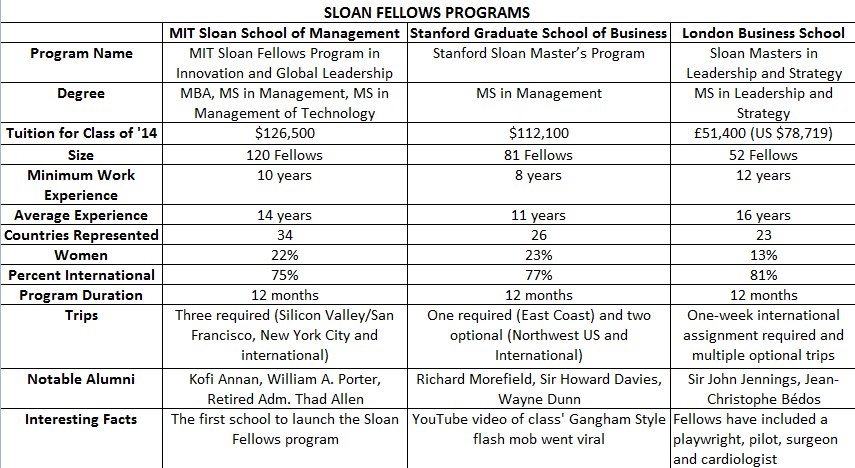Stanford has the highest percentage of female students at 23%, 5 percentage points higher than MIT and 10 percentage points higher than LBS. The proportion of female students across all three Sloan programs is significantly lower than their female enrollment in the MBA programs. Stanford’s Hochleutner speculates that women who have taken time off for family matters may be hesitant to take a year out to go back to school. LBS’ Selby says some women may be holding themselves back out of concern that other areas of their lives will be given short shrift. “I do think a lot of women who would be great on this program sometimes feel guilty that they’re not going to be able to manage everything,” she says. Her message to them? “Don’t hang back, you deserve the investment.”
BRAZILIAN BARBECUES AND CHINESE NEW YEAR NIGHT
Typical of most Sloan Fellows, Karthik Janakiraman, 37, has 14 years of business experience. He’s also a self-described world citizen who grew up in Nigeria and India but spent 15 years in the US. Janakiraman’s background is high tech, and he’s led teams, developed products, created businesses and spent time in social enterprise. But he wanted to dive further into the concepts behind business. “I never really understood a whole lot about finance, organizational behavior or marketing from a theoretical standpoint, so I decided to come to the school to learn about that and to use that knowledge to explore ideas about new ventures,” he says. He chose the Stanford Sloan program, whose close ties with the school’s engineering department complemented his master’s in mechanical engineering. “For me it’s been a wonderful experience, and I’m so glad I did it,” he says.
His biggest surprise? “I was a little jaded when people talked about how intimate the program was, I figured everybody was in it for themselves, but, in fact, it is,” he says. Students live on campus and bring their families into the fold, creating a close-knit community, he adds. From a Brazilian barbecue complete with caipirinhas to a Chinese New Year night, the students go out of their way to connect and exchange cultures, he says.
THE RISKS INVOLVED
But even for those without family commitments, taking a year off from employment and forking over more than $100,000 for a degree can be a tough sale.
Stanford’s Hochleutner contends that the risk is a boon for Fellows. It signals to potential employers that these individuals are willing to make bold moves, he says. “You don’t know exactly what’s going to come out the other end,” he says. “That’s by design. I talk to private equity firms and others who say they look at this mix of students as the types of people who can run their businesses because they believe in themselves, they’re willing to take that step and invest in the future even though there’s that uncertainty there.”
Sacca, himself a Sloan Fellow, says the experience was a transformative life event. “I think of my life of before Sloan and after Sloan because of the impact it had on how I think about myself in the context of the world and how I approach opportunities and challenges.”
According to Selby, the toughest case Fellows have to make is to their families. As mid-career professionals, many Fellows have partners, children and parents who may depend on them. Given all of their responsibilities, stepping out of their careers for a year and taking on a hefty tuition payment can be a difficult choice. She advises approaching the decision it as a family matter. “This is a family adventure. It’s a time when the student gets to rethink what’s important to him or her, and they’re going to apply it to the next 10 to 15 years of their lives,” she says. “People say it’s not over, I still have more to know and more to achieve.”
Despite a proliferation of competing programs, including multiple masters of management degrees in Europe and Asia, which the Sloan directors contend target younger, less-experienced students, Hochleutner says the need for a mid-career management degree is growing. “There are all these trends that are happening later and later in life. People get married later, have kids later, have major career transitions, and yet management education keeps pushing people to go back to school earlier,” he says. “When do people really have a chance after 30, when they’ve gone through two or three major life transitions in terms of family and career and personal goals to take a step back and really think in a broad sense about how I’m going to have an impact in the rest of my career?”
Fortunately for elite middle managers everywhere, the program started by Alfred P. Sloan more than 80 years ago still offers that opportunity.






Questions about this article? Email us or leave a comment below.